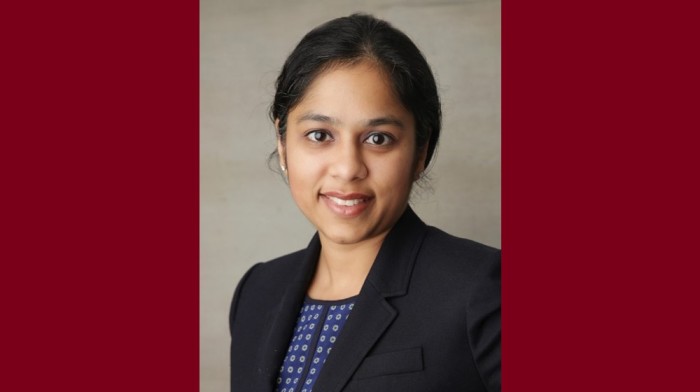
Impacting nearly two out of every ten Americans, chronic pain disorders are more common than one would imagine. Chronic pain is defined as pain lasting over three months or beyond the usual recovery time for healing. Vasudha Goel, MD, a dual-boarded specialist in anesthesiology and interventional pain management with University of Minnesota Physicians (M Physicians), explains her passion for pain management.
“Chronic pain has many downstream effects,” Dr. Goel said. “Patients often experience reduced quality of life and low satisfaction with social roles within their family, communities and the society. There are effects on every system of the body, with most individuals experiencing poor sleep and worse mental health outcomes. Chronic pain management starts early by identifying worsening acute pain or continuation of acute pain beyond the expected time period. It includes supportive care with physical therapy, occupation therapy, and psychological support for improving functional outcomes. Pharmaceutical options are offered to patients to help cope with pain along with interventional procedures in carefully selected patients. It’s a truly multidisciplinary effort to get the patient back to their level of functioning.”
Dr. Goel attended medical school at Kilpauk Medical College in Chennai, India. During her training, she was exposed to cancer pain management on the oncology service at a large university. She realized the impact of chronic pain on a patient’s quality of life when she accidentally dropped the last vial of pain medication for one of the cancer-survivor patients on her service.
“This hospital was in a low resource setting with extremely sparse access to pain medications, and that vial was all I could prescribe to the patient,” she said.
It was in that moment that Dr. Goel realized that she wanted to address pain management with non-medication-based approaches.
Throughout the history of medicine, opioids have been used as the primary means to manage acute and chronic pain. Dr. Goel shared that over the decades, the dangers of opioids have been increasingly uncovered. This has led to the integration of interventional pain management techniques in medicine, which are safe, minimally invasive and may offer better outcomes in some scenarios.
The field of interventional pain management focuses on treating pain through innovative procedures used in conjunction with multidisciplinary care. Dr. Goel practices at the M Health Fairview Pain Clinic and the Ambulatory Surgery Center, located within the M Health Fairview Clinics and Surgery Center - Minneapolis. She is adept in same-day procedures to diagnose and treat chronic pain using various nerve blocks and steroid injections with imaging (fluoroscopy and ultrasound) for precise, safe and effective care. She also performs radiofrequency ablation procedures and offers implantable technologies in carefully selected patients.
“We recently started doing peripheral nerve stimulators this summer,” Dr. Goel said. “We are trying to keep up-to-date with newer techniques coming out to help our patients with difficulty managing chronic pain. These solutions offer patients excellent pain control, often minimizing clinic visits.”
Dr. Goel is passionate about the need for more education in the subspecialty of interventional medicine. She shared that medical students with clinical rotations in her pain clinic are always surprised at the work that they are doing. She believes that there is a lot of work to be done to raise awareness in this field. She spends her time educating trainees at the U of M Medical School. Dr. Goel collaborates with various subspecialists across the system. She also spends significant time teaching nationally and internationally in workshops and panels.
Recently, Dr. Goel has been focusing her research on outcomes.
“We know these techniques are not for everybody,” Dr. Goel said. “That's why I want to study who specifically benefits from these techniques. These patients are spending time to come and see me and I'm very cognizant of that. I really want to match the therapy with the patient and optimize health care resource utilization.”
Dr. Goel’s patients often share that they had given up believing that there was a solution to their chronic pain prior to coming to her clinic and receiving treatment. “Those stories are what keep me motivated and make me get up in the morning to come to work,” she said.